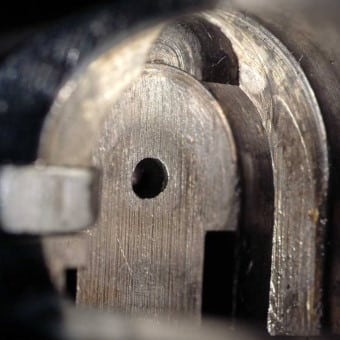- Rifling Methods of Factory Fitted 9 mm Luger (9 x 19 mm) Pistol Barrels: A Reference Resource - Review
- Rifling Methods - A Review and Assessment of the Individual Characteristics Produced - Review
- A General Discussion of Gun Barrel Individuality and an Empirical Assessment of The Individuality of Consecutively Button Rifled .22 Caliber Rifle Barrels - Review
- An Introduction to the Forensic Examination of Toolmarks - Review
- Toolmarks: Examining the Possibility of Subclass Characteristics - Review
- Subclass Characteristics: From Origin to Evaluation - Review
Member's Area - Machining & Subclass -
Manufacturing Methods - Single point cutting
← Back to Manufacturing Methods
Video
Images
There are no images yet for this entry.
Related Class Characteristics
Related Tools
There are no related tools yet for this entry.
Definition
Potential for Subclass Carryover
Single point cutting – A cutter is adjusted to make a cut of approximately .0005” depth and is then pulled through to create each groove in the barrel. After making the cut in each groove, the cutter is adjusted to cut .0005” deeper and then pulled through each groove again with the process repeated until the desired depth of the groove is obtained.
Subclass carryover is possible in a barrel rifled using this cut rifling method. The carryover is generally observed in the grooves of a barrel when the cut rifling method is used, since this is where the cutting tool is removing material from the barrel. Subclass carryover may arise from defects in the cutting tool that persist from groove to groove and/or barrel to barrel. A cast of the interior of the barrel can be made to evaluate for potential subclass carryover. Subclass carryover will have the appearance of continuous lines that extend the length of the barrel’s interior surface. Comparing the muzzle portion of the cast to the breech end of the cast can aid in this evaluation.
However, areas of individual characteristics will also be imparted to the barrel during manufacturing due to chip formation, tool wear, plowing, side flow, built-up edge, etc., thus creating a unique surface. These areas would appear as random, non-continuous tool marks with various starting and stopping points and voids along the interior of the barrel. Individual characteristics may also be imparted through use/abuse of the barrel over time.

